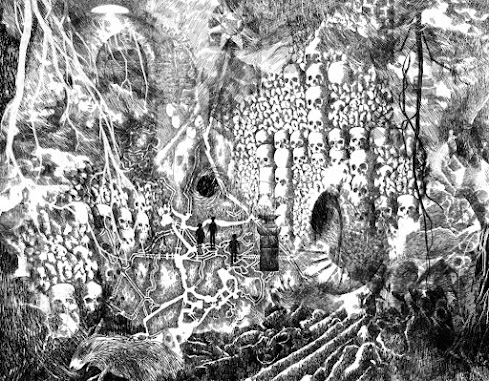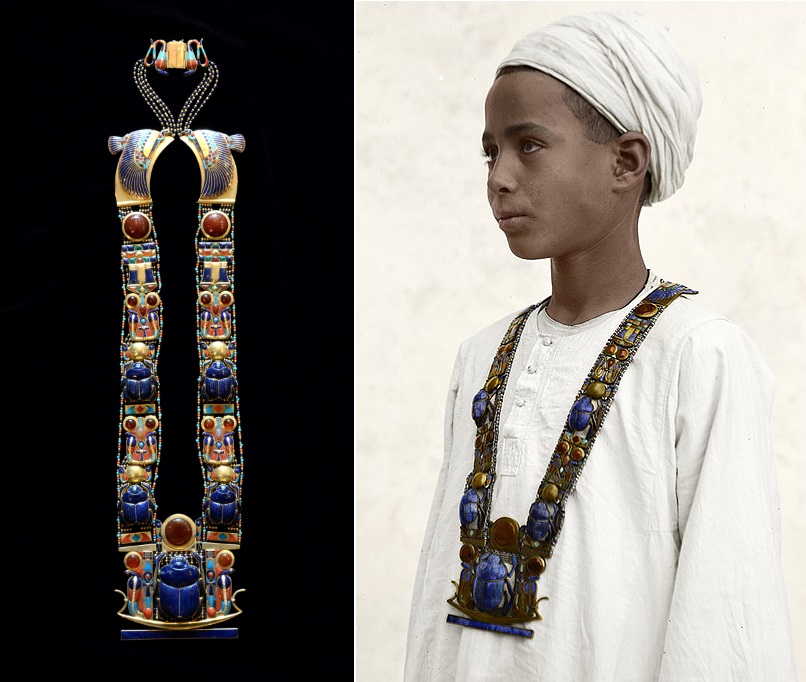Tuesday 15 November 2022
The First School in the Village by Jeannie Waudby
Wednesday 9 November 2022
The Chestnut Roaster: History and Make-Believe - the Perfect Recipe by Eve McDonnell
Hands up: who enjoys history class in school? Truth be told, I loved history lessons, but I found it all a little bit hard. I was focusing so hard on all those dates and names that I missed something special – something hidden between the pages and beyond the facts! With a bit of digging, I discovered wild adventures that were rarely told. I found little triumphs and forgotten struggles, coincidences, intriguing inventions and strange fashions. I also learned about the personal lives of the stars of our history books (how did 18-year-old Victoria spend that one lonesome hour she’d requested when she was first told she was Queen?).
Over time, I found myself seeking out the stories behind the stories, and I found what I was looking for in several places: in a fiction book with a hint of history; in a fact-filled documentary on TV; in a brilliantly re-imagined moment of history at the movies; in dug-up treasures; in paintings. I soon realised that any mash-up of history and make-believe grabbed and held my fullest attention. The perfect recipe!
Of course there is! The history bit goes as follows: the story is set in Paris 1888, one year before they hosted a spectacular World Fair known as the Exposition Universelle. Great minds of the world marvelled at the fair’s mind-blowing exhibits, and visitors feasted their eyes on intriguing inventions. Even before arrival at the Exposition, visitors were greeted by something extraordinary – the newly built grand entrance to the exhibits: the Eiffel Tower.
And that is where I added make-believe to history: when I found a series of photographs showing the growing Eiffel Tower, I tried to imagine how everyone felt on seeing such a giant rise slowly before their eyes. How would the people of Paris have reacted if they went to sleep one day in 1888 when the tower was only small, and woke up forgetting the whole of the last year? To them, the tower would have grown into a monster overnight, from the first image in the row of towers shown above, to the fifth!
The Eiffel Tower was not the only historical Parisian marvel I included in the book. Paris is the location of possibly the best place in all the world for a game of hide and seek: its underground maze of tunnels, some barely big enough to wriggle through. These underground quarries were the birthplace of the stone used to build many of the great buildings of Paris. Though the existence of the underground city comes as some surprise to The Chestnut Roaster’s main character, Piaf, the estimated nearly 200 miles of tunnels made their presence known throughout Parisian history.
In the 1770s, a deadly sinkhole known as the ‘Mouth of Hell’ swallowed houses at Rue d’Enfer. A few years on, the hidden chambers were used as burial sites during the French Revolution, and later, during World War II, the French Resistance fighters used the dark and deep tunnels as hideouts while other chambers were converted into bunkers by German soldiers. Secret parties and concerts were held underground, explorers explored, and artists left their mark with wild and wonderful murals.
To add a dash of fiction, I added several wondrous underground spots for Piaf and her brother to explore: a Museum of Objects, Tagine Pot Hollow, and the Apothecary, to name a few.
You can visit one small section known as the Catacombs today, and it has some very strange inhabitants indeed – the bones of six million people! At the end of the 18th century, Paris’s cemeteries were overflowing. The streets held the stench of corpses, bones collapsed into neighbouring buildings. By cover of night, the corpses were carried by horse and black cloth-covered wagons to the Catacombs where workers fashioned impressive displays out of the bones themselves. As odd as that may seem, you can see for yourself that the bones are not make-believe! They had to star in Piaf’s story!
Illustration from The Chestnut Roaster, copyright Ewa Beniak-Haremska
But sometimes the mash-up of history and make-believe is not so clear: Piaf and her brother were never alone on their adventures, for the ghost of poor Philibert Aspairt, a man said to have disappeared underground, is said to roam the darkest routes (and also the pages of The Chestnut Roaster!) If that is history or make-believe, we have yet to tell!
So, as you can see, history provided so much inspiration for The Chestnut Roaster – it is indeed one big mash-up of history and make-believe! I wonder, if you picked a page from your history book today, what stories could you imagine when you read between the lines?
Perhaps you can create your own?
You can watch Eve's video on how she came to write The Chestnut Roaster here.
Eve McDonnell is a children’s author and artist who lives in Co Wexford with her husband, twins, a dog and three cats. Having recognised the similarities between a blank canvas and a blank page, her writing career kicked off following a visit to a fortune-teller who told her to Write! Write! Write! Eve provides creative writing and crafting workshops to libraries, schools, writing clubs and festivals.
Find out more about Eve and her books on www.evemcdonnell.com, or say hello via Twitter @Eve_Mc_Donnell or Instagram @Eve_Mc_Donnell.
Buying link: uk.bookshop.org
Wednesday 2 November 2022
Happy birthday, BBC! 100 years of broadcasting for children by Susan Brownrigg
One of the earliest programmes transmitted was
Children’s Hour in 1922 – the same year the BBC was founded (on 18th
October).
The very first wireless (radio) broadcast was made on
14th November from a studio in London. The radio station was called 2LO, and it broadcasts a mixture of news, music, drama and talks.
The first BBC radio broadcast was made on 2nd November 1922
The BBC was created by a group of leading wireless manufacturers including Marconi.
Guglielmo Marconi was an Italian inventor and
electrical engineer who created a practical radio wave-based long distance wireless
telegraph system.
Shipping companies began to use his radio telegraph
and the system was used for passenger communication, navigational reports and
distress signals. A Marconia operator on board the Titanic after it struck an
iceberg was able to signal for help, resulting in the Carpathia coming to the rescue
of 700 survivors.
The earliest BBC broadcasts were on for just a few
hours each day.
Children’s Hour was on between 5 and 5.55pm every day.
The first BBC broadcast for children took place on the
5th December 1922 when A.E. Thompson, an engineer on the Birmingham
station presented a few minutes of entertainment for children.
This was quickly followed on the 23rd
December by the first Children’s Hour.
The programme featured songs, poems and stories. They
also included birthday greetings especially for poorly children.
They were so popular that listeners clubs called Radio
Circles were set up. Members received a badge and other gifts and were invited
to picnics and Christmas parties.
Children were also encouraged to support good causes and to collect ‘silver paper’ for charities. The money raised went to the Children’s Hour Wireless Fund which provided wirelesses for children’s hospital wards.
The show included much-loved presenters such as ‘Uncle
Mac’ and ‘Auntie Kathleen’.
A popular feature were long-running series such as
Norman and Henry Bones, boy detectives, and Jennings at School; nature study in
Out with the Romany, by the Rev George Bramwell Evens who would cross the
countryside in his vardo with his horse and dog (thought it was actually all
produced in a studio!) and dramas based on books such as The Box of Delights by
John Masefield.
Children’s Hour stopped for just four days during WW2 and continued until 1964.
If you wanted to know what programmes would be on the radio, you could buy the Radio Times. The listings programme was first published in September 1923 and continues to include BBC radio schedules today.
TELEVISION.
In November 1929 John Logie Baird used BBC frequencies
to run his first experimental television broadcasts, again from London.
Pictures were in black and white.
The first live programme was a variety show called
Here’s Looking at You featuring singers, tap dancers and a ‘wonder horse’
called Pogo!
The first regular television service launched on 2
November 1936 with a bulletin of British Movietone news, a documentary called
Television Comes to London, and Picture Page where presenter Joan Miller
pretended to work a telephone switch board as a way of introducing guests on the
talk show!
Joan Miller presenting Picture Page
You can see clips here … https://www.bbc.com/historyofthebbc/research/story-of-bbc-television/tv-as-we-know-it
The first TV announcers were Leslie Mitchell, Jasmine
Bligh and Elizabeth Cowell.
Leslie Mitchell was very handsome with a moustache. He
also presented on Picture Page but was only called the male announcer – which he
didn’t like!
Jasmine and Elizabeth were recruited from over 1000
applicants to become ‘hostess-announcers.’ They were chosen for their looks and
for their ability to speak clearly. They also had to look after guests
appearing on the programmes. Presenters had to memorise their words as there
were no autocues to show them their script.
For the Children
was the first TV show for children, it began on 2 April 1937. The show was on
for 10 minutes at 3pm and included stories, puppet shows and songs.
Television broadcasts were halted in 1939 because of
WW2. TV including For the Children returned in 1946. And in October a now
famous puppet Muffin the Mule made his debut on the show with his ‘friend’ presenter
Annette Mills.
In 1950 the BBC introduced Children’s Newsreel – the
lead story on the first episode was about the first polar bear cub born at
London Zoo. Other early news stories included Making Humbugs, Making Cricket
Bats and If you Lost your Dog.
Three years later the BBC launched Watch with Mother a
cycle of TV shows for children that included puppet shows Andy Pandy, Flowerpot
Men, The Woodentops, Rag Tag and Bobtail as well as Picture Book which encouraged children to make things. Watch with Mother was so popular
that repeats continued until 1975.
The BBC has continued to produce children's programming for another 50 years including Vision On, Play School, Newsround, Blue Peter, Grange Hill, Live and Kicking, Teletubbies and Doctor Who.
What are your favourites?
WRITING CHALLENGE:
Imagine you work for the BBC children’s department and
have been asked to come up with a new radio or TV programme.
Can you write a script for the first five or ten
minutes of your show? Will there be a presenter like Uncle Mac or one of the Blue
Peter presenters? Perhaps it could be a news programme – what topics would you
need to cover this week? Or perhaps you would like to bring back one of the
characters from one of the old puppet shows like Andy Pandy – what mischief
will your characters get up to?!
For this week's Time Tunnellers YouTube video about the BBC click here.
Susan Brownrigg is a Lancashire lass and the author of three historical children's books for ages 8+ - Gracie Fairshaw and the Mysterious Guest & Gracie Fairshaw and the Trouble at the Tower are seaside mysteries set in Blackpool. Kintana and the Captain's Curse is a pirate adventure set in Madagascar.
Tuesday 25 October 2022
Digging up the past for book ideas by Victoria Williamson
The national tourism organisation for Scotland, VisitScotland, has since 2009 been running themed years to celebrate aspects of Scotland – its people, culture and heritage – that deserve recognition. 2022 has been designated Scotland’s Year of Stories and, as an author with a passion for history, this past year has provided a number of opportunities for me to explore the intersection of local history and archaeology, and the stories they inspire.
My love of the past began as a child on frequent visits to Kirkintilloch’s Auld Kirk Museum, which housed a collection of historical objects such as Roman soldiers’ uniforms and household items through the ages. Staff also put considerable effort into engaging children through activity days and, growing up, I got to try out everything from traditional crafts such as carding wool, spinning and weaving to attempting shoemaking on a cobbler’s last.
These visits sparked lots of story ideas which I scribbled down on bits of paper with hand-drawn illustrations, stapling them together to form my first ‘books’ which usually ended up in the bin when a better idea came along. There was one story idea that stayed with me for many decades, however, inspired by my memorable year in primary four when I was eight, when I learned about the poems of Robert Burns for the first time. That year we read Tam o’ Shanter, and I still remember the thrill of hearing the spine-tingling tale of witches through the medium of Scots poetry and learning about the early life of Burns and the world he grew up in.
The story of witches dancing to the devil’s music in the Auld Kirk at Alloway stayed with me, and when I turned to Scottish stories for inspiration for my books as an adult, that was the first tale that jumped straight into my head. Researching the life of Burns, I came across accounts of the young Burns hearing folktales of kelpies, wraiths and bogles round the kitchen fire, and I could imagine him being just as spellbound by the stories he was told by adults as I was as a child. That got me thinking about a fictional account of how his own adult poem Tam o’ Shanter could have been inspired by a childhood encounter with witches in the Auld Kirk. The story of Hag Storm is therefore a metafiction of the young Rab having a spooky Halloween experience which later becomes the basis of his own supernatural poem.
But it isn’t just books, poems and my own childhood experiences which I’ve drawn on to come up with my own novels. As a member of Archaeology Scotland, I’ve been lucky to have had the chance to get involved in local archaeological digs, and over the past year have got out and about in Denny, near Falkirk, and Cathkin Park, Glasgow, exploring Scotland’s past. Not only do community digs like these teach volunteers the basics of field excavation – from topsoiling, mattocking, trowelling and surveying techniques, to cataloguing finds and interpreting evidence – they also give us the opportunity to experience history in a hands-on way which is very different from the experience of reading about it in a book. I’ve been amazed on these digs just how exciting it is to uncover little pieces of the past, no matter how small or seemingly insignificant-looking. Bits of broken china, glass and bent nails can seem every bit as thrilling a find to an amateur historian like me as digging up stashes of Roman coins or a new dinosaur bone is to a professional. Uncovering the foundations of strike-breakers’ houses in Denny and the original Third Lanark football team baths and changing rooms in Cathkin Park were wonderful experiences, and it felt to the volunteers like we’d found our very own ancient Egyptian tomb or Mayan pyramid.
One of the best things about engaging in local archaeological digs is getting the chance to hear the stories told by excavators, volunteers and visitors to the digs sites about their own experiences of the site as children, or about their ancestors’ experiences. Visitors to the Denny dig site who looked at the displayed ‘Virol bottle’ we’d found recalled being given Virol as a supplement, either by their parents or at school. Passers-by and museum staff at the Jimmy Johnston Academy at Cathkin Park recounted tales of their visits to the football stadium when it was still standing and shared their memories of their time in the park as children. The finds at these sites represented real links not just to the past buried under a layer of ash at Milton Row in Denny and years of soil and infill at Cathkin Park, but to the childhoods and lived experiences of local residents who took part in these digs or who visited the sites. It also emphasised for me the ability of community archaeology to connect the everyday experiences of people alive today to those who lived in the past.
Archaeology Scotland has long been providing fantastic opportunities such as these for volunteers to engage in local digs and find out all about the history on their doorstep. My own journey as an author was started in childhood by enthusiastic historians who passed on their knowledge and encouraged me to explore all of the stories my local area had to offer. But it’s not just children and young people whose imaginations can be sparked by local digs, and whose early experience of history and archaeology might set them on the path to becoming the authors of the future. It’s never too late to embark on your writing adventures, so why not get involved in one of Archaeology Scotland’s digs in this Year of Stories, and see what local tales you can uncover?
Writing Challenge
Imagine you find a hag stone, either by a river or by the sea. Have a think about the location where you find it – can you describe it? Is it by running water in a deep, dark forest? By a stream in a sunlit glade? By a stormy sea with wind-tossed waves? On a sandy beach with warm waters lapping at your toes? See how many interesting adjectives you can use to describe the place where you find your hag stone, as where you find it might just influence what you see through the hole!
Now…
Put the hag stone to your eye and look through the hole. What do you see?
Describe the ‘other world’ that you can see through the hole. This place can be anything you like – a fantasy world, a futuristic science fiction world, funny, spooky, scary, weird or magical – it’s up to you! I’d love to read your hag stone tales, so do get in touch on Twitter or through my website to show off your writing!
Watch Victoria's YouTube video by clicking here

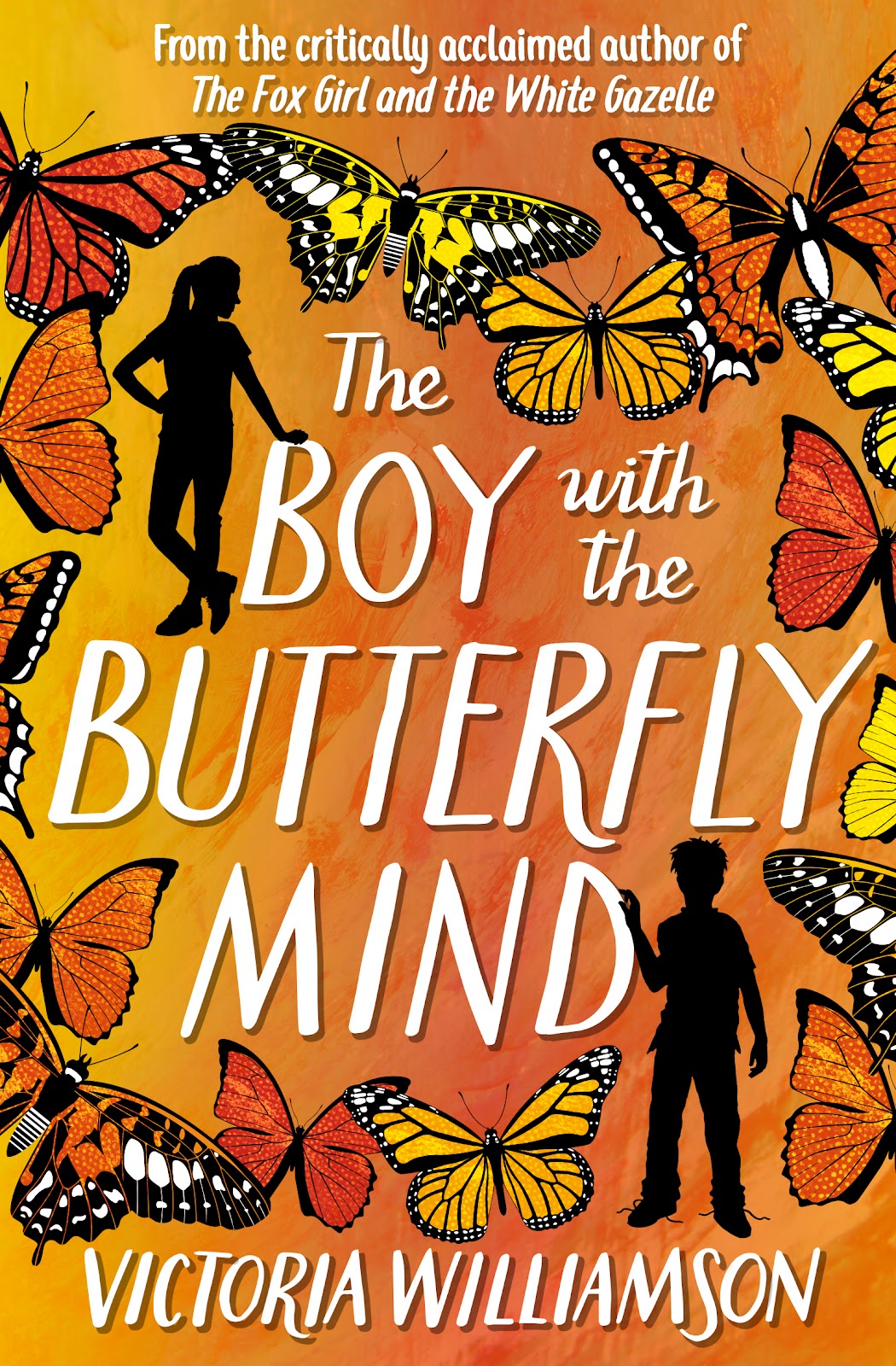

Website: www.strangelymagical.com
Twitter: @strangelymagic
Tuesday 18 October 2022
Book Recommendations for Black History Month 2022
To celebrate Black History Month 2022, on this week's blog we have each chosen a favourite historical novel written by a Black or Asian author, featuring Black and Asian protagonists. Barbara's choice is an unmissable classic; the other books are ones that you may not have caught up with yet, as they were published more recently, but they are all excellent and well worth discovering.
Meanwhile, on our YouTube channel, Barbara Henderson looks at Matthew Henson, the Black explorer who may well have been the first to reach the North Pole. You can read his story in Race to the Frozen North by Catherine Johnson (Barrington Stoke).
You can watch Barbara's YouTube video here
Ally Sherrick
CHILDREN OF THE BENIN KINGDOM
by Dinah Orji (Dinosaur Books Ltd)
An exciting and immersive adventure and the debut novel of Dinah Orji, a British author of Nigerian heritage, who was inspired to write a story set in the historical Kingdom of Benin in present-day Nigeria by travels she has made to her ancestral land.
It tells the story of Ada, a young girl growing up in the rainforest with her father, Papa Eze, a herbalist and healer who helps heal the sick in their village. When he himself falls ill, he decides the time has come to tell Ada the truth about her own heritage and ancestry, something we learn he has held back from her to keep her safe.
Using this new and unexpected knowledge about herself and her family, Ada sets off into the heart of the forest with her friend, Mbe, to look for the Edo kingdom, a place which she hopes will help answer the many questions she has. As it turns out, the people of the kingdom need her help to overcome the bitter feud between the ones in power too. But there are people – bad people – hot on Ada’s heels and, together with her friends, she must use all her wits, courage and the help of her ancestors to overcome them and reach her goal.
This is an exciting adventure set in a time and place which offers a brilliant opportunity to engage young readers in discovering about one of Africa’s most fascinating civilizations, the ancient Edo Kingdom of Benin, and to understand more about the culture and beliefs of the people responsible for creating the astoundingly beautiful Benin Bronzes.
Susan Brownrigg
THE LIZZIE AND BELLE MYSTERIES: DRAMA AND DANGER
by J. T. Williams (HarperCollins Publishers)
Drama and Danger is the first in a Georgian-era mystery series which centres on two real-life young women – Lizzie Sancho and Dido Belle.
Set in London in 1777, J. T. Williams imagines that the two girls had met and become friends despite their difference in status. Lizzie’s family run a popular tea shop while Belle lives at the magnificent Kenwood House.
The story centres around the Drury Lane Theatre Royal. Lizzie’s father, Ignatius Sancho, is about to become the first black actor to play Othello – but on opening night a chandelier crashes from the ceiling almost killing him.
Lizzie and Belle both spot the assassin high above the
theatre stage and join forces to bring the villain to justice.
Their investigations have them exploring London and realising that the attack is linked to a slavery plot and that The Shadow is working for someone from the theatre. The closer they get to the truth the more danger the girls find themselves in!
I especially liked that the author uses an imagined story to get readers to think about gaps in history and that reimagining the past is empowering.
Drama and Danger is just under 350 pages, making it look a chunky read BUT J.T.’s story is fast-paced and broken into 5 acts, with gripping short chapters. The book also includes a number of gorgeous illustrations by Simone Douglas as well as letters and case notes from the girls, all of which make this an ideal introduction to historical fiction.
The final chapter ends with a teaser for a second book – Portraits and Poisoning – which I am really looking forward to!
Catherine Randall
THE LION ABOVE THE DOOR by Onjali Q. Raúf (Orion)
This book, by the prize-winning author of The Boy at the Back of the Class, is based on such a brilliantly simple idea that I couldn’t believe I hadn’t read a book like it before.
Leo and Sangeeta have got used to the fact that no one in their school history books looks like them. Then, on a trip to Rochester Cathedral to learn about the Second World War, Leo spots someone with exactly the same name as him on a war memorial. This discovery triggers a roller-coaster ride of exploration and a race against time as Leo, Sangeeta and their friend Olivia hurry to reveal the facts about their newly discovered heroes in time for the TV show coming to film at their school. But someone in their class doesn’t want them to succeed. It takes the help of the friends’ whole families, both at home and abroad, to show the world their ‘Forgotten Heroes’.
This is an important book for upper KS2 which challenges the traditional, lazy narratives about WW2, and introduces children to war heroes from Singapore, India and Ghana. It also captures brilliantly the shocking, casual racism to which children from non-majority backgrounds are subject to every day, making us think about how we treat others who are different from us.
The back of the book contains excellent resources about Black and Asian heroes of WW2, a picture section, and a map you can fill in as you discover your own forgotten heroes.
Jeannie Waudby
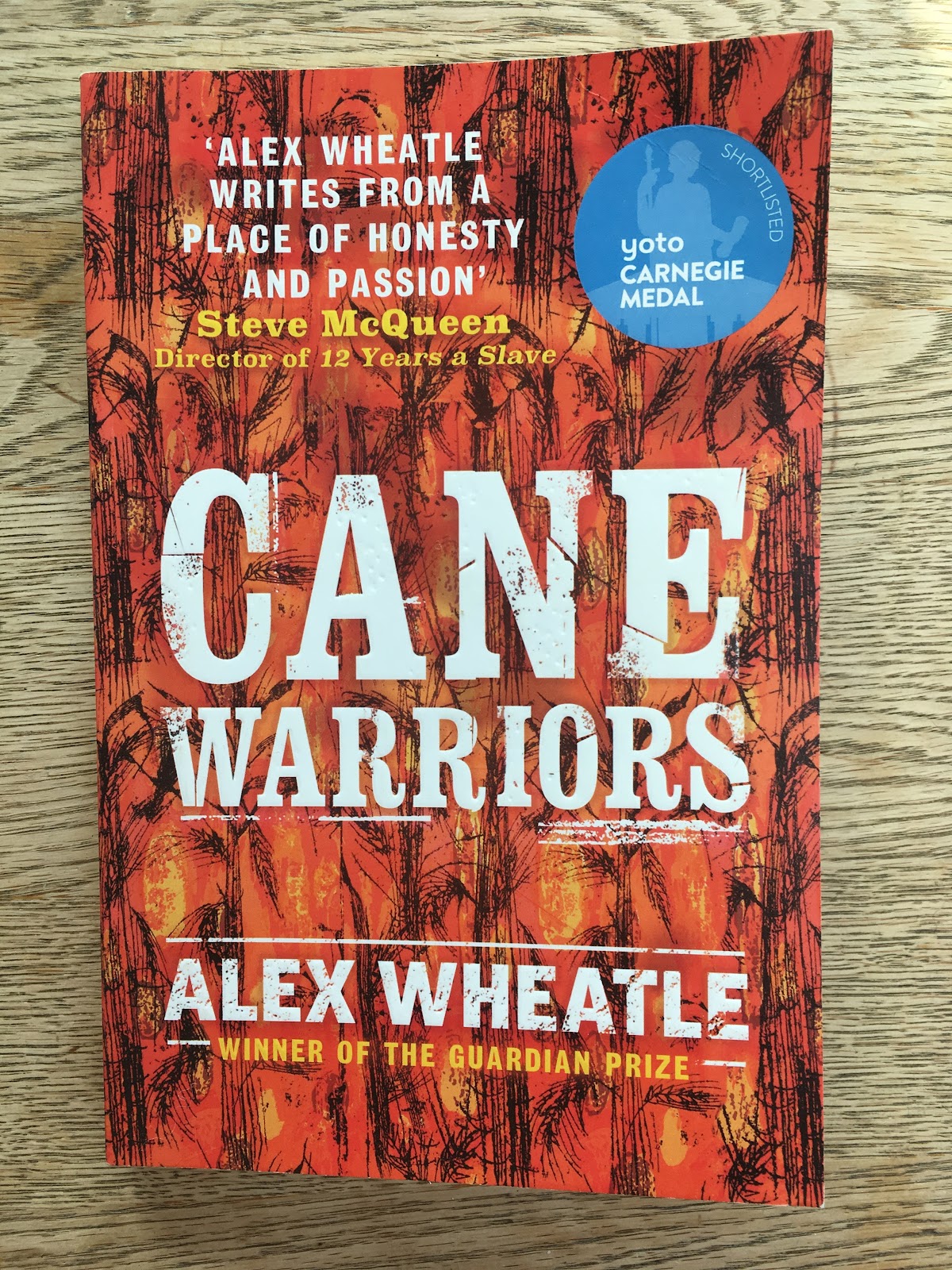

CANE WARRIORS by Alex Wheatle (Andersen Press)
Alex Wheatle takes an historical event – the 1760 uprising on the Jamaican Frontier sugar plantation – and brings it to life through the eyes of Moa, a 14-year-old boy.
Moa has spent all his life enslaved on the plantation, subjected to brutal beatings and forced to watch the systematic horrific treatment of his friends and family. His whole life has been lived in terror. The story opens with Miss Pam’s death. She was a beloved healer and lifter of spirits who has kept alive precious wisdom from back home. Now Moa is faced with a huge decision: will he join the uprising to free the Frontier and neighbouring plantations? What follows is a tense battle against the odds, a band of brothers who are fighting for freedom to live their own lives in safety and peace, and to protect their friends, neighbours and families. Once Moa leaves the plantation, even in this danger he is amazed by the new things he sees: tiny insects and plants, fruit generously growing wild for the taking.
The first paragraph opens with ‘the chanting of tiny creatures’ and this begins a relationship throughout the book between nature and people. To Moa and his friends it is a source of comfort and nurture, a place to hide and to return to. But to the white British enslavers, it is a thing of foreignness and terror, there only to be exploited.
The sea too has different meanings for Moa. When he first sets eyes on it, he is delighted and astonished by ‘the wide blue waters’. His first thought is that across that expanse lies the home he has never seen. Yet it is the means by which his life has been stolen and he knows that across it will come the British military with their muskets and cannons and their determination to protect their money-making system of slavery. Moa and his band, increasing along the way, take a moment of peace in its cool waters. The sea to Moa comes to mean a way home – whether it is alive or lost in battle.
This is a heart-breaking and thrilling novel in which something that really happened comes vividly alive through one boy’s choices, courage and hope.
Barbara Henderson
NOUGHTS AND CROSSES
by Malorie Blackman (Penguin Random House)
My recommendation for Black History Month is not a new book: Malorie Blackman’s Noughts and Crosses was first published in 2001. Apart from the fact that it is a wonderful read by an inordinately gifted storyteller, it felt ground-breaking in its simplicity, swapping black and white in an alternative history.
In Blackman’s version of a recognisable 21st century world, Crosses, those of Afro-Caribbean heritage, are the privileged ones, while the white Noughts are expected to be content with disadvantage and subservience. Throw in a love story and political unrest, and you have plenty of conflict to sustain a series. Thought-provoking, entertaining, and frankly genius, Noughts and Crosses was recently adapted into a successful TV series too. For me as a Time Tunneller, the standout chapter depicted a history lesson. Callum, the main Nought character, is among the first to attend a reputable all-Cross school and finds that history only remembers those of Cross descent, conveniently ignoring those of Nought origin. Blackman skilfully holds up a mirror here – most of the BAME inventors and pioneers mentioned by the fictional history teacher in this chapter were unfamiliar to me. Yes, that felt compelling – Noughts and Crosses achieves that rare and precious thing of entertaining me, challenging me and teaching me something new.
Wednesday 12 October 2022
Would you risk the future to change the past? The Butterfly Club books by M.A. Bennett
The Butterfly Club books are about the ultimate kind of travel – time travel. They are about meeting like-minded people in other places. The series takes as its subject very well-known events, but largely unknown heroes.
Everyone has heard of the Titanic, but Guglielmo Marconi, whose wireless radio saved hundreds of lives on that doomed ship and countless lives over the following century, is unknown to many. Everyone’s heard of Tutankhamun, and most people think that he was discovered by Howard Carter, but not many young readers will have heard of Abdel Rassoul, a boy their own age, who was actually the first person to discover the greatest archaeological find of all time. Most kids will have heard of the Mona Lisa, but most won’t know that the painting wasn’t famous at all until it was stolen in 1911 by a man named Vincenzo Peruggia, who thought that her smile could save his home country of Italy from defeat in the impending Great War. And the moon landings of 1969 are familiar to most, but many space fans won’t realise how close the Apollo 11 came to a fatal explosion on the moon’s surface, only averted by the brave men and women of Mission Control.
One of my objectives in writing The Butterfly Club series was to bring these unknown characters out of the shadows and into the light. Hopefully more and more children will be made aware of their extraordinary lives. All the Butterfly Club books hinge on a theorem called The Butterfly Effect, a concept that states that the mere flap of a butterfly’s wings in one place can have a huge impact in another place far away. Each book focusses on one extraordinary real-life character from the past, who, in a small way, changed history.

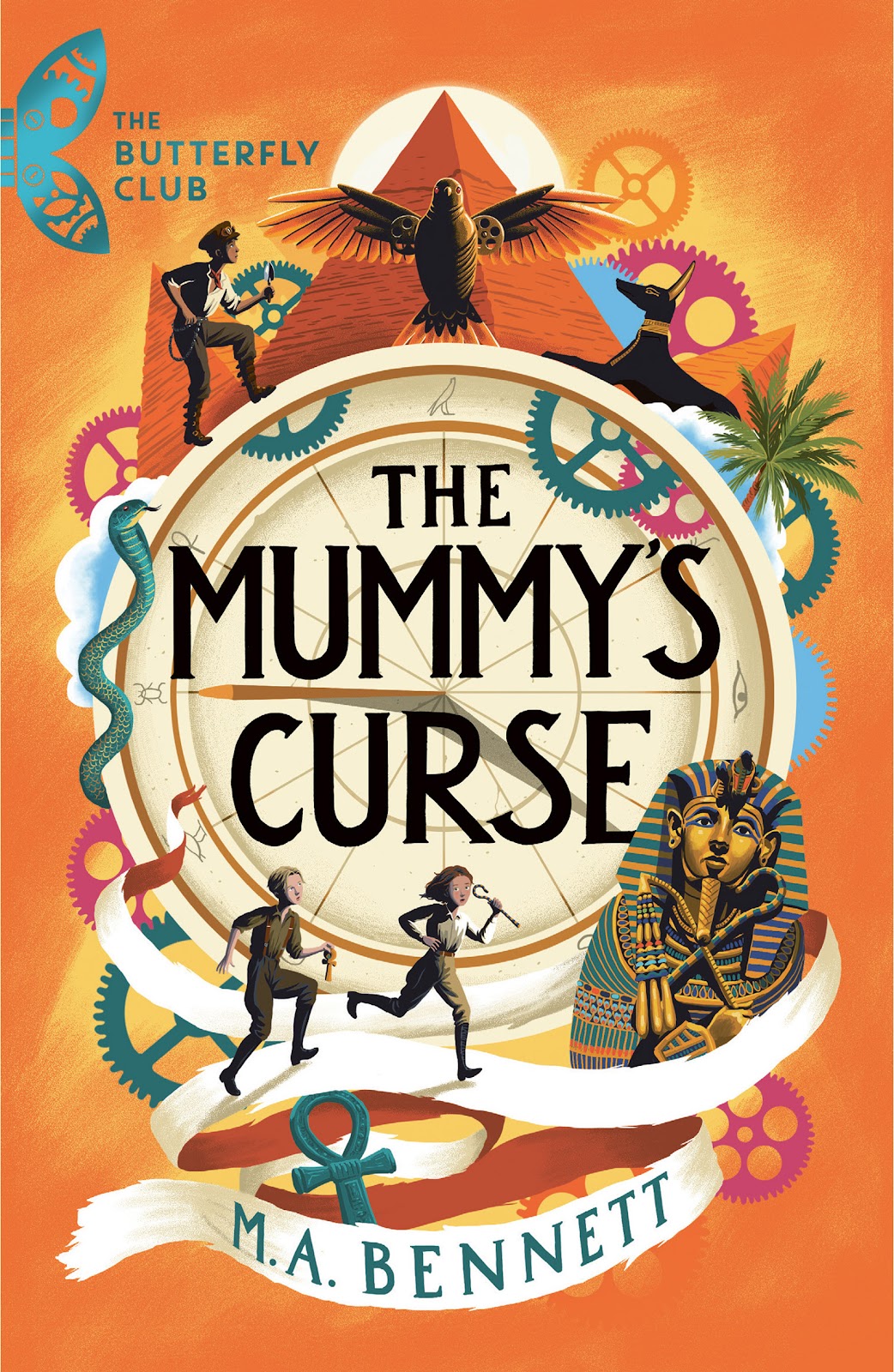
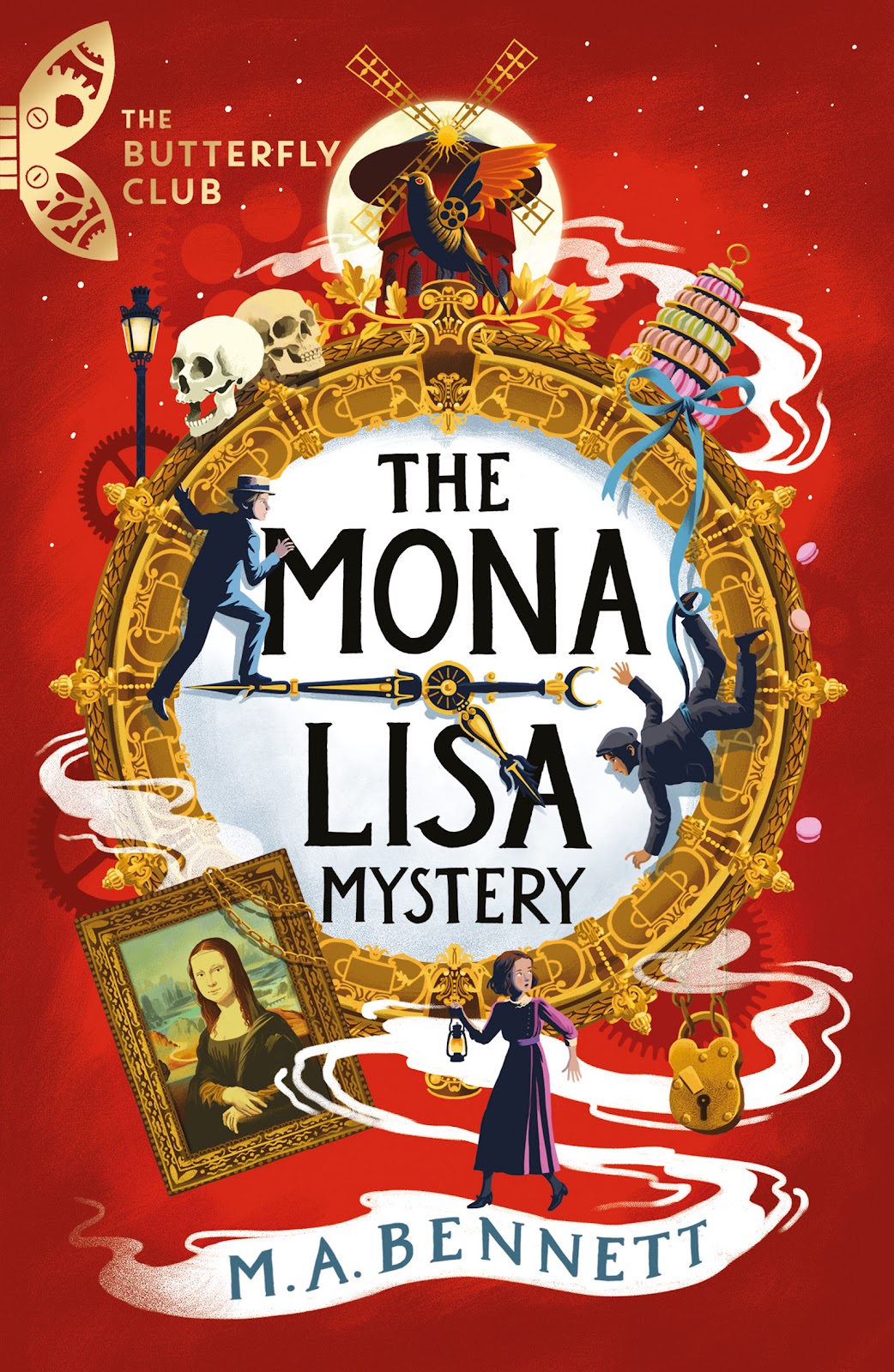
The second book in the series, THE MUMMY’S CURSE, revolves around a tiny action by a twelve-year-old boy, who stumbled on unimaginable treasure and changed the face of archaeology for ever. The Butterfly Club, a Victorian society which uses time travel to plunder the future for wonders, have their eyes on a shiny new prize. In Egypt a man named Howard Carter searches for a lost king – Tutankhamun's mummy, rumoured to be the greatest archaeological prize of all time. Together with her friends, Konstantin and Aidan, and a clockwork cuckoo, Luna Goodhart boards the Time Train. The gang travel from Greenwich, London in 1894 to Egypt’s Valley of the Kings in 1922 in a race to uncover the mummy first. With the aid of famed author Arthur Conan Doyle, the time-travelling thieves dodge tomb traps and solve temple puzzles to locate the long-dead pharaoh. But as it turns out it is not the time thieves but Howard Carter’s waterboy, a twelve-year-old called Abdel, who stumbles on the top step of the long-buried tomb almost by accident. But when Abdel disturbs Tutankhamun's 3000 year sleep he wakes something else too – a deadly and ancient curse. And now all the time thieves must face the terrifying consequences of their actions...
And now for a writing challenge! And because I would never set a challenge that I wouldn’t take on myself, it’s one that I’ve already completed between the covers of THE MUMMY’S CURSE. I want you to imagine how you would feel if you were the first person to walk into Tutankhamun’s tomb after 3000 years. Would you feel excited? Adventurous? Or a little bit scared of what you have disturbed? How would you describe the golden treasure that awaits you? The smell of the ancient stone? The sand underfoot? Howard Carter, the famed archaeologist who has enjoyed credit for the discovery for all these years, actually acknowledged his waterboy Abdel as the discoverer of the tomb, and gave him a very precious pendant from the treasure chamber. How would you feel if someone put that pendant around your neck? Would it feel heavy? Cold? Would you feel like you deserved it, or that it wasn’t really yours? Or even that it was cursed?
Abdel Rassoul in Tutankhamun's pendant
Good luck with your own writing. And if you want to see how I did in the challenge, read THE MUMMY’S CURSE!
I’ll leave you with this thought. There are plenty of huge things going on in the world at the moment and it’s easy for children (and adults too!) to feel small and insignificant. But the Butterfly Effect, and Abdel’s experience, reminds us that everything is connected, and maybe one day a small action that we take will have a big significance in the world.
Marina Bennett x
Watch Marina's YouTube video on Tutankhamun by clicking here
M.A. Bennett was born in the north of England to an English mother and a Venetian father. She loved history so much she studied it at four different universities. She also studied art and worked as an illustrator, an actress and a film reviewer. Now she has her dream job of being a writer and her books have been translated into more than 20 languages. She lives in London - the home of Greenwich Meantime.
The Butterfly Club books for middle-grade readers are: The Ship of Doom (published 3 March 2022), The Mummy's Curse (published 13 October 2022), The Mona Lisa Mystery (to be published 13 April 2023) and The Trip to the Moon (to be published 12 October 2023)
The Butterfly Club books are published by Welbeck Flame, an imprint of Welbeck Children’s Books Welbeck Children’s Books and are widely available in bookshops and online.
You can follow Marina on Twitter: @MABennettAuthor
Using the setting in your writing as another character with Ruth Estevez
Most of my books are set in my native Yorkshire, and knowing the landscape intimately, means I can describe it with the love I have for ...

-
Meet the Time Tunnellers! We are five children's book authors who write historical novels. Ally Sherrick Ally’s dream job as a c...
-
Hi I’m Lindsay Littleson and I’m the author of The Titanic Detective Agency. One of the main characters in the novel is Johan Cervin Svenn...
-
In my Tudor-set adventure, The Queen’s Fool , my heroes, young orphan girl, Cat Sparrow and her new-found friend, French boy, Jacques Bonhom...












